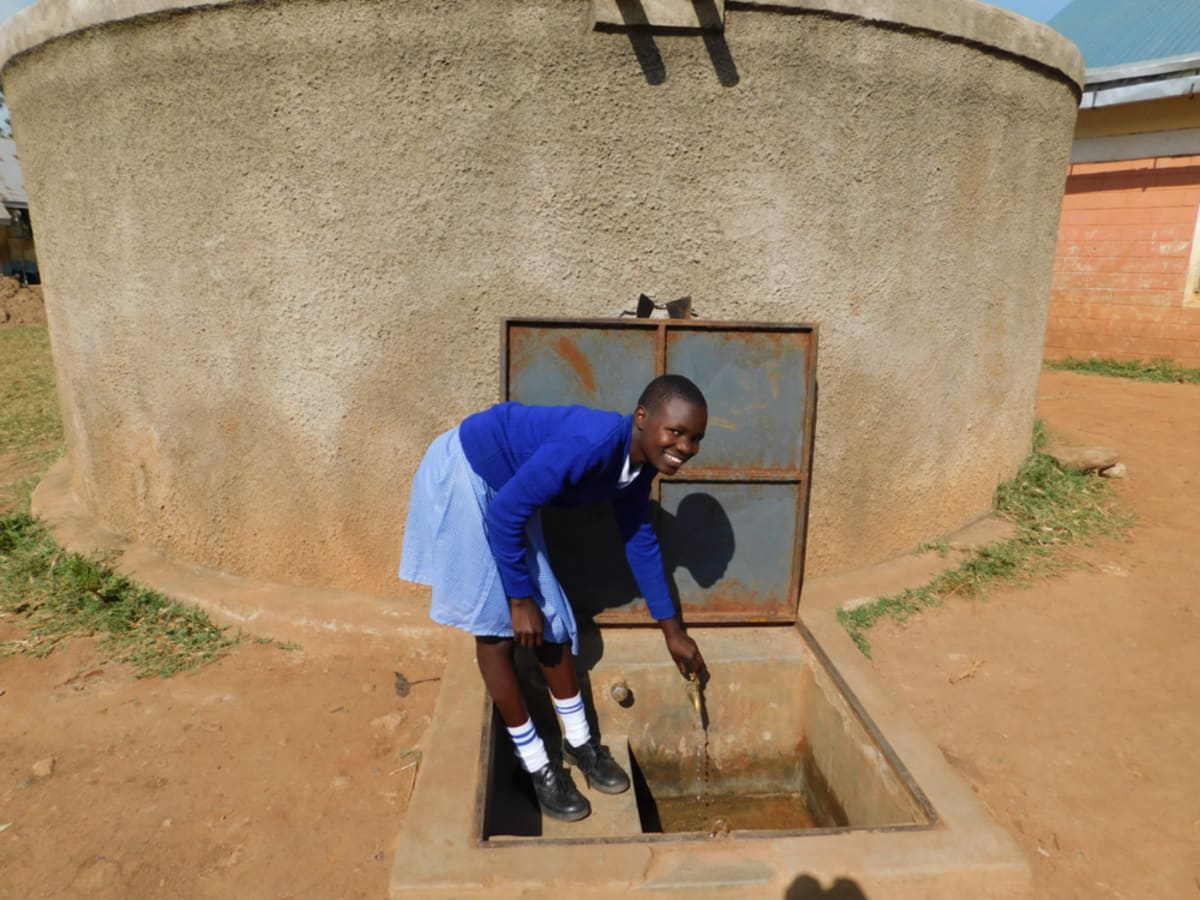There are 1,458 students attending Lumakanda Township Primary School, and they do not have a reliable source for water.
"We have had problems with water in this school for a very long time," said Teacher Julie Wambanda.
"At one point, the public health department almost closed the school for dirty and contaminated water. At another time, the school risked being closed for lack of pit latrines. As if that is not enough we were warned about our well and how risky it is to our pupils."
Recently, the government made an effort to bring services closer to the people. To do this, they decided to increase the number of sub-counties. In Kakamega County, 13 sub-counties were created, Lugari being one of them. Lumakanda Center was picked to be the headquarters. This led to a sudden increase in population and social amenities as well. This is how Lumakanda Township Primary School grew so drastically in enrollment and became an important school in this region.
When the school first opened, they had no water. The Parent Teacher Association did what they could by digging for water. When they reached some water, they build a cement cover and installed a hatch. Students use a bucket and rope system to get the water out.
Unfortunately, the water levels drop during the driest months of the year. This makes school life even more difficult. Not only is it difficult and dangerous to get water out from the well, but the water itself is dirty. The water got so dirty last year that children had to pick worms out of their water. The school was condemned by the national water services board due to unhygienic water and the risk posed to pupils by the poor soil structure around the well. This could collapse at any time.
What we can do:
Training
Training on good hygiene habits will be held for two days. The facilitator will use PHAST (participatory hygiene and sanitation transformation), ABCD (asset-based community development), CTC (child to child), lectures, group discussions, and handouts to teach health topics and ways to promote good practices within the school. The CTC method will prepare students to lead other students into healthy habits, as well as kickstart a CTC club for the school.
Handwashing Stations
This CTC club will oversee the new facilities, such as handwashing stations, and make sure they are kept clean and in working condition. The two handwashing stations will be delivered to the school, and the club will fill them with water on a daily basis and make sure there is always a cleaning agent such as soap or ash.
VIP Latrines
The school is currently using temporary latrines that are not in good condition.
"We have a problem with latrines in this school. Recently, eight pit latrines meant for the boys sunk, prompting the school to close for one month. At the moment, we are sharing latrines with Lumakanda Secondary and Nursery School making the latrines so dirty," said Teacher Paul Simiyu.
"We need assistance."
Two triple-door latrines will be constructed with local materials that the school will help gather. Three doors will serve the girls while the other three serve the boys. And with a new source of water on school grounds, students and staff should have enough to keep these new latrines clean.
Rainwater Catchment Tank
A 50,000-liter rainwater catchment tank will help alleviate the water crisis at this school. The school will also help gather the needed materials such as sand, rocks, and water from the spring for mixing cement.
Once finished, this tank can begin catching rainfall that will be used by the school’s 1,458 students and their teachers. While this many students may have access on any given day, realistically a single water source can only fully support a population of 350-500 people. This school would be a good candidate for a second project in the future so that adequate water is available. To learn more, click here.
We and the school strongly believe that with this assistance, standards will significantly improve. These higher standards will translate to better academic performance!

 Rainwater Catchment
Rainwater Catchment
 Rehabilitation Project
Rehabilitation Project


































